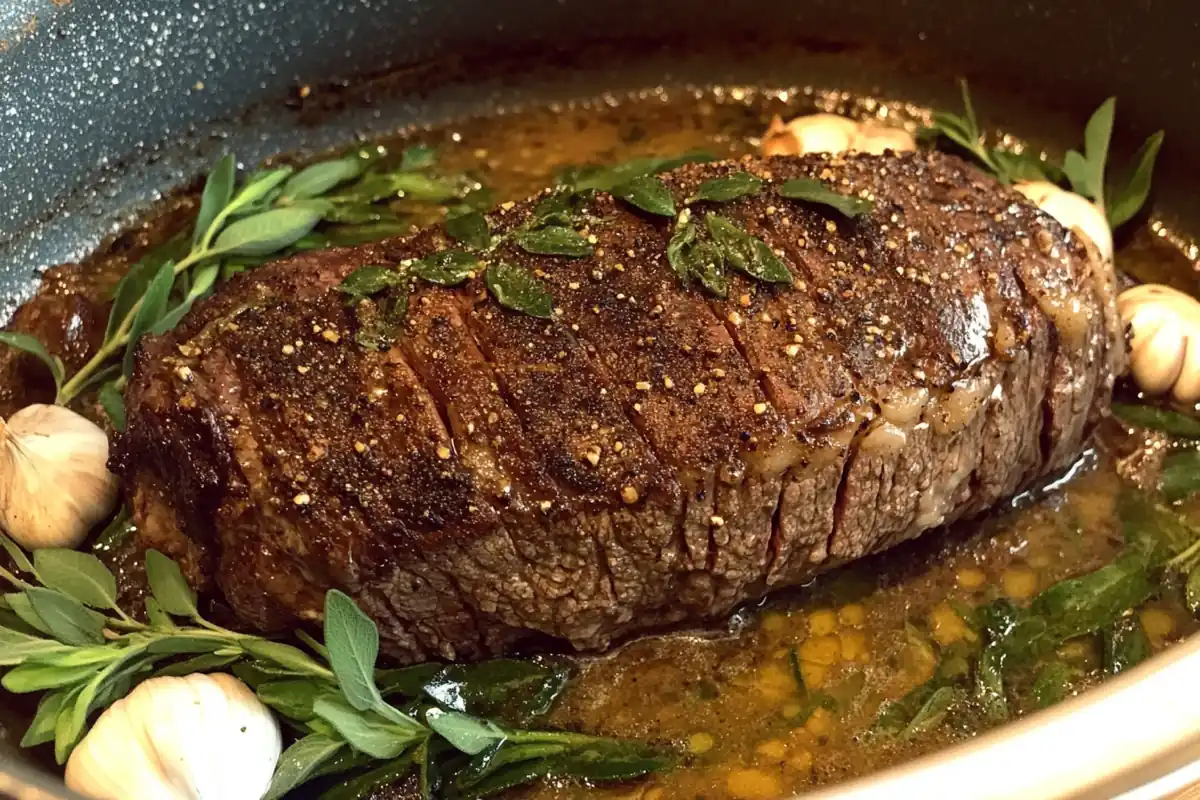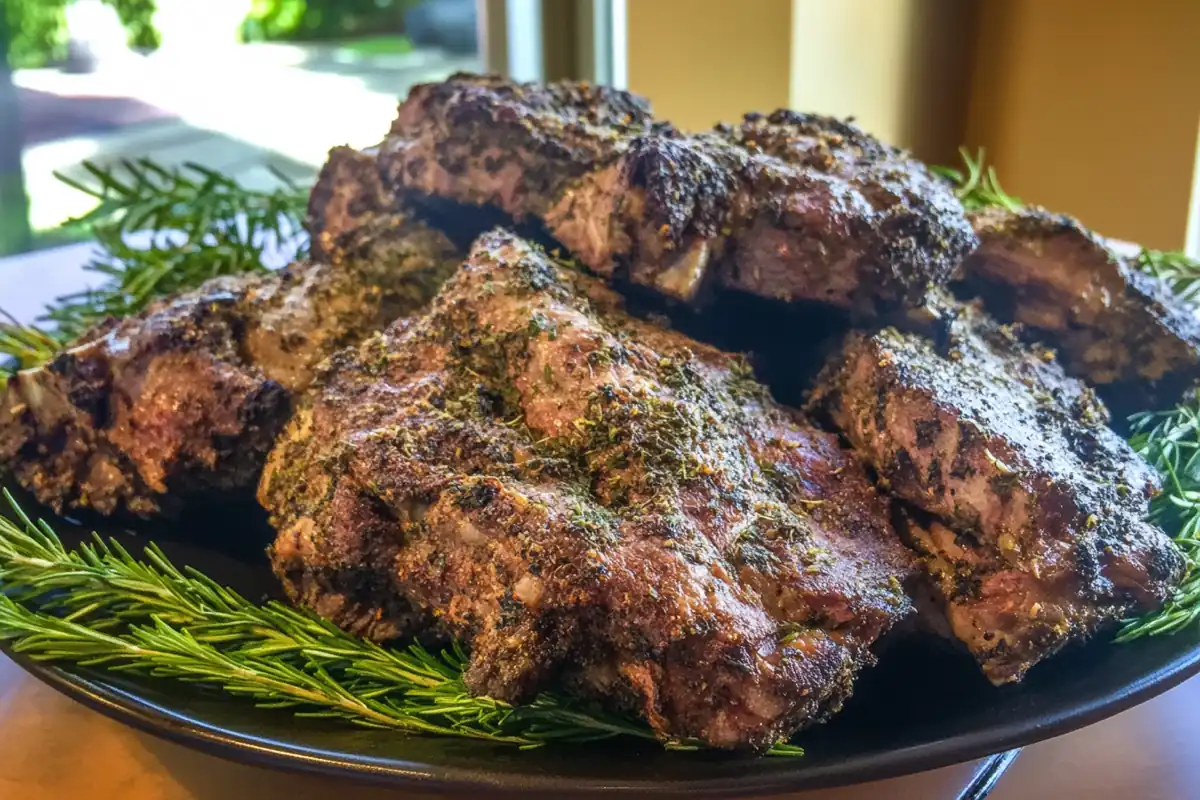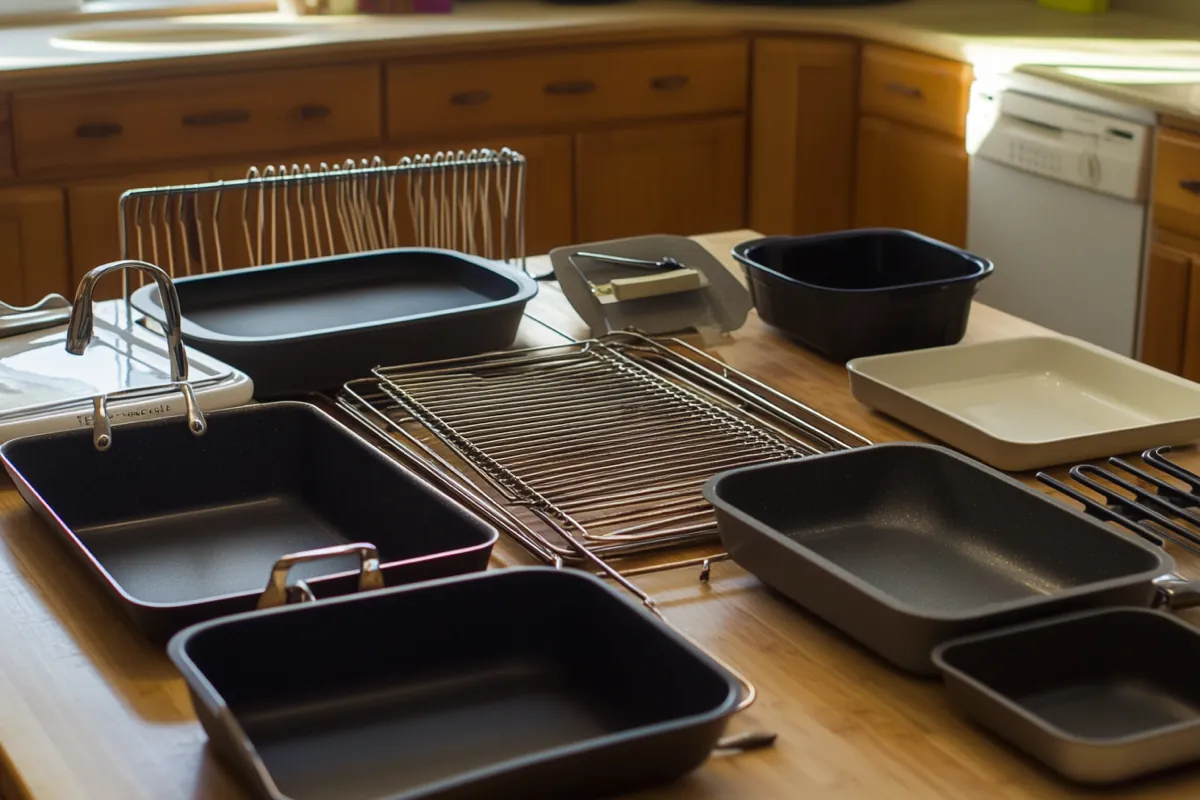When it comes to cooking techniques, roasting is a favorite for many. It transforms ordinary ingredients into something extraordinary. But have you ever wondered, does oven roasting after pan roasting do anything? This article explores the nuances of roasting, particularly the interplay between pan roasting and oven roasting. We’ll dive into the science behind roasting and examine whether this double-roasting method truly enhances your dishes.
Table of Contents
Introduction to Roasting Techniques
Roasting is one of the oldest cooking methods, and it brings out rich flavors while making food tender and delicious. It’s particularly effective for meats and vegetables. Understanding different roasting techniques is essential for any home chef looking to elevate their cooking.
Importance of Roasting in Cooking
Roasting can significantly enhance the flavor and texture of food. The high heat caramelizes natural sugars, resulting in a rich, complex flavor. Moreover, roasting helps to develop a crispy exterior while keeping the inside juicy. Whether you’re preparing a whole chicken or a tray of seasonal vegetables, the roasting method can transform your meal.
Overview of Pan Roasting vs. Oven Roasting
Pan roasting combines both stovetop and oven techniques. First, you sear the meat or vegetables in a hot pan, creating a flavorful crust. Then, you transfer the dish to the oven to finish cooking. On the other hand, oven roasting involves cooking food solely in the oven. This method is excellent for large cuts of meat or when cooking in bulk, as it allows for even cooking and heat distribution.
Understanding the Roasting Process
To understand if oven roasting after pan roasting makes a difference, it’s essential to grasp the roasting process itself.
What is Pan Roasting?
Pan roasting involves searing food in a hot skillet, often with a bit of oil, to develop a crust. This step locks in moisture and adds flavor. After searing, the food is transferred to the oven to cook through. This combination of methods allows you to achieve a perfect balance of textures.
Benefits of Using a Roasting Pan
A roasting pan is designed to withstand high heat and distribute it evenly. Its high sides help contain juices, preventing splatter and enhancing flavor. Additionally, using a roasting pan aids in creating a delicious gravy from the drippings, which adds an extra layer of flavor to your dish.
The Role of a Roasting Rack
A roasting rack elevates the food above the pan, allowing hot air to circulate evenly. This prevents the bottom from becoming soggy and ensures even cooking. Moreover, it allows fat to drip away from the food, resulting in a healthier meal.
What is Oven Roasting?
Oven roasting is a straightforward technique where food is cooked in an oven at high temperatures. This method is great for achieving a crispy exterior while maintaining juiciness inside.
Advantages of Oven Roasting
Oven roasting is hands-off once you place your dish inside. It allows for even heat circulation, making it ideal for larger cuts of meat or multiple dishes at once. Additionally, it’s easier to monitor cooking times and temperatures, ensuring your food cooks perfectly.
In summary, understanding the fundamentals of roasting techniques sets the stage for exploring the question, does oven roasting after pan roasting do anything? In the following sections, we will delve deeper into the science behind these methods and their effects on food quality.

The Science Behind Roasting
To truly appreciate the benefits of roasting, it’s essential to understand the science behind it. Roasting isn’t just about cooking; it’s a complex chemical process that enhances flavor and texture.
Maillard Reaction and Flavor Development
One of the key components of roasting is the Maillard reaction. This chemical reaction occurs when proteins and sugars in food are exposed to high heat, creating that beautiful brown crust we all love. This reaction develops rich flavors and aromas, making roasted food more appetizing. The Maillard reaction is especially important when pan roasting, as the initial searing creates a solid foundation for flavor.
Heat Distribution in Pan vs. Oven Roasting
Heat distribution plays a crucial role in the effectiveness of roasting. When pan roasting, the heat comes directly from the stovetop. This method allows for quick and intense heat, which is ideal for searing. However, the heat may not circulate as evenly as in an oven.
How a Roasting Pan Affects Cooking
Using a roasting pan can significantly enhance the cooking process. It is designed to withstand high temperatures and provide even heat distribution. This ensures that the food cooks uniformly, preventing hot or cold spots that can lead to uneven cooking. Additionally, the pan’s design helps retain moisture and flavor, making your roasted dishes even more delicious.
The Impact of a Roasting Rack on Heat Circulation
A roasting rack elevates the food above the pan, allowing hot air to circulate around it. This promotes even cooking and prevents the bottom from soaking in grease or juices. As a result, using a roasting rack can lead to a better texture, especially for meats, which benefit from a crispy exterior and juicy interior.
Searing: Before or After Oven Steak?
Searing meat is a common practice, but the timing of this step can vary. Understanding the benefits of searing before or after oven roasting can help you make informed decisions in the kitchen.
The Benefits of Searing Meat
Searing meat enhances its flavor through the Maillard reaction, creating a delicious crust. This initial step also locks in moisture, ensuring a juicy result. Whether you choose to sear before or after oven cooking can significantly impact the final dish.
Sear Before Oven Cooking
When you sear meat before transferring it to the oven, you create a flavorful crust that enhances the overall taste. This technique is especially beneficial for larger cuts of meat, as it helps retain moisture during the longer cooking time in the oven.
Sear After Oven Cooking
On the other hand, searing after oven cooking can add a crispy finish, especially for dishes that require a lower cooking temperature first. This technique may not be as common but can produce excellent results when done correctly.
Comparative Analysis: Searing Techniques
Ultimately, the choice between searing before or after cooking depends on your desired outcome. Searing before oven cooking is the more traditional method and is generally recommended for maintaining juiciness and flavor. However, exploring both techniques can lead to exciting culinary discoveries and enhance your cooking repertoire.
In summary, understanding the science behind roasting and the importance of searing can greatly influence the quality of your meals. The next section will explore whether oven roasting after pan roasting truly makes a difference, focusing on flavor enhancement and texture improvement.

Does Oven Roasting After Pan Roasting Make a Difference?
Now that we have explored the fundamentals of roasting and the science behind it, let’s examine the central question: does oven roasting after pan roasting make a difference?
Enhancing Flavor Through Double Roasting
One of the primary benefits of oven roasting after pan roasting is the enhanced flavor profile. When you pan roast first, you develop a deep, caramelized crust. This initial searing creates complex flavors that are often more appealing than those achieved through oven roasting alone. Transferring the dish to the oven allows for gentle cooking, which can deepen the flavors even further. This method effectively layers flavors, creating a more complex and satisfying dish.
The Texture Factor: Crispy vs. Tender
Another crucial aspect to consider is texture. Pan roasting creates a beautiful crust that provides a satisfying crunch. However, it may leave the interior slightly less tender than when using only the oven. By oven roasting after pan roasting, you allow the meat to continue cooking without losing its moisture. This combination results in a dish that is crispy on the outside and tender on the inside, creating a delightful contrast that appeals to many palates.
How to Achieve Optimal Results with a Roasting Pan
To maximize the benefits of both methods, using a quality roasting pan is essential. A sturdy roasting pan can withstand high temperatures and help retain heat, ensuring even cooking. Additionally, the pan should be large enough to allow for proper airflow around the food, which is crucial during the oven roasting phase.
Tips for Using a Roasting Rack Effectively
Incorporating a roasting rack is equally important. Elevating your food allows hot air to circulate evenly, promoting a consistent cooking process. This technique not only helps achieve a crispy exterior but also ensures that the juices flow away from the meat, preventing it from becoming soggy. Therefore, using a roasting rack can significantly enhance the quality of your double-roasted dish.
Practical Applications: Recipes and Techniques
Understanding the benefits of oven roasting after pan roasting opens up a world of culinary possibilities. Here are a few practical applications to consider:
Oven Roasting After Pan Roasting: Step-by-Step Guide
- Choose the Right Cut: Select a cut of meat that benefits from both methods, such as beef tenderloin or chicken thighs.
- Sear First: Heat a little oil in your roasting pan over medium-high heat. Season your meat and sear it on all sides until browned.
- Transfer to the Oven: Once seared, transfer the pan to a preheated oven. Roast until the internal temperature reaches your desired doneness.
- Rest Before Serving: Allow the meat to rest for a few minutes before slicing. This step lets the juices redistribute, leading to a more flavorful bite.
Common Mistakes to Avoid
- Overcrowding the Pan: Make sure there’s enough space between pieces of meat to allow for even cooking.
- Skipping the Resting Period: Don’t skip letting your meat rest; it’s essential for juiciness.
- Using Low-Quality Equipment: Invest in a good roasting pan with rack to ensure the best results.
In summary, oven roasting after pan roasting can significantly enhance flavor and texture. The combination of methods allows for a dish that is both crispy and tender, making your meals more enjoyable. As we move to the final section, we will address common questions about roasting techniques to further clarify this cooking method.

Conclusion: Mastering Roasting Techniques
In summary, understanding whether oven roasting after pan roasting do anything can significantly enhance your cooking. We explored various techniques, the science behind roasting, and the benefits of using a roasting pan and roasting rack. By combining pan roasting with oven roasting, you can create dishes that are both flavorful and texturally appealing, elevating your culinary skills to new heights.
Recap of Key Points
- Flavor Development: The Maillard reaction plays a crucial role in developing rich flavors during roasting.
- Texture Contrast: Combining pan and oven roasting creates a crispy outside and tender inside.
- Importance of Equipment: Using quality roasting pans and racks can enhance cooking results.
Encouragement to Experiment with Roasting
Don’t hesitate to experiment with different roasting techniques. Try searing before or after roasting, or even test various seasonings and marinades. The world of roasting is vast, and each attempt will teach you something new about flavor and texture.
FAQ
As we conclude our exploration of roasting techniques, let’s address some frequently asked questions related to roasting.
Can Roasting Pans Go in the Oven?
Yes, roasting pans are specifically designed to be used in the oven. They are made from materials that can withstand high temperatures, making them perfect for roasting meats and vegetables. Ensure you choose a pan that is oven-safe and has sturdy handles for easy handling.
Does a Roasting Pan Make a Difference?
Absolutely! A good roasting pan can significantly affect your cooking results. It promotes even heat distribution and allows fat to drain away from the food, leading to healthier meals. Additionally, a high-quality roasting pan enhances flavor by capturing drippings, which can be used to make delicious gravies or sauces.
Is It Better to Cook Roast in the Oven or Stove?
Cooking a roast in the oven is generally preferred. The oven provides consistent heat and allows for even cooking, which is essential for larger cuts of meat. While stovetop cooking can be useful for searing, the oven’s environment helps achieve the desired tenderness and flavor.
When to Use Roast Setting on Oven?
The roast setting on an oven is best used when cooking large cuts of meat or poultry. This setting usually involves a higher temperature, which helps develop a beautiful crust while keeping the inside juicy. Use it when you want to achieve that perfect balance of crispy exterior and tender interior.




